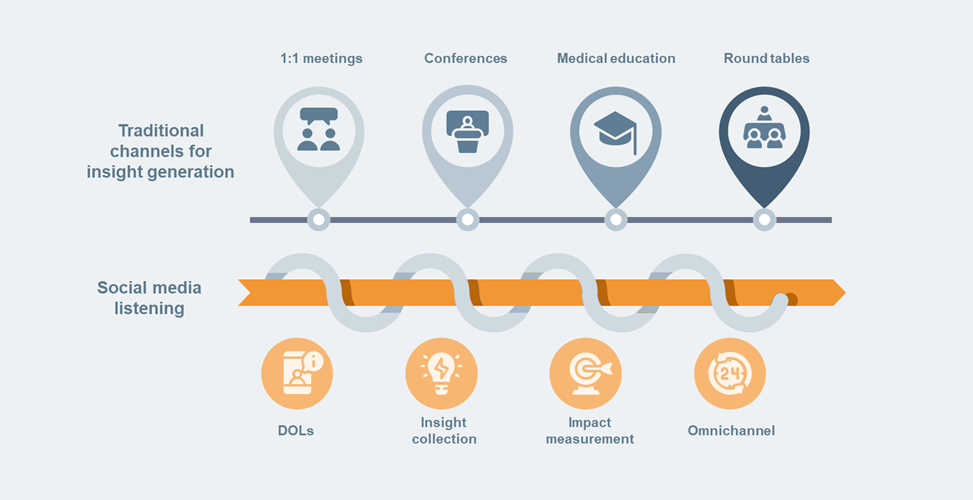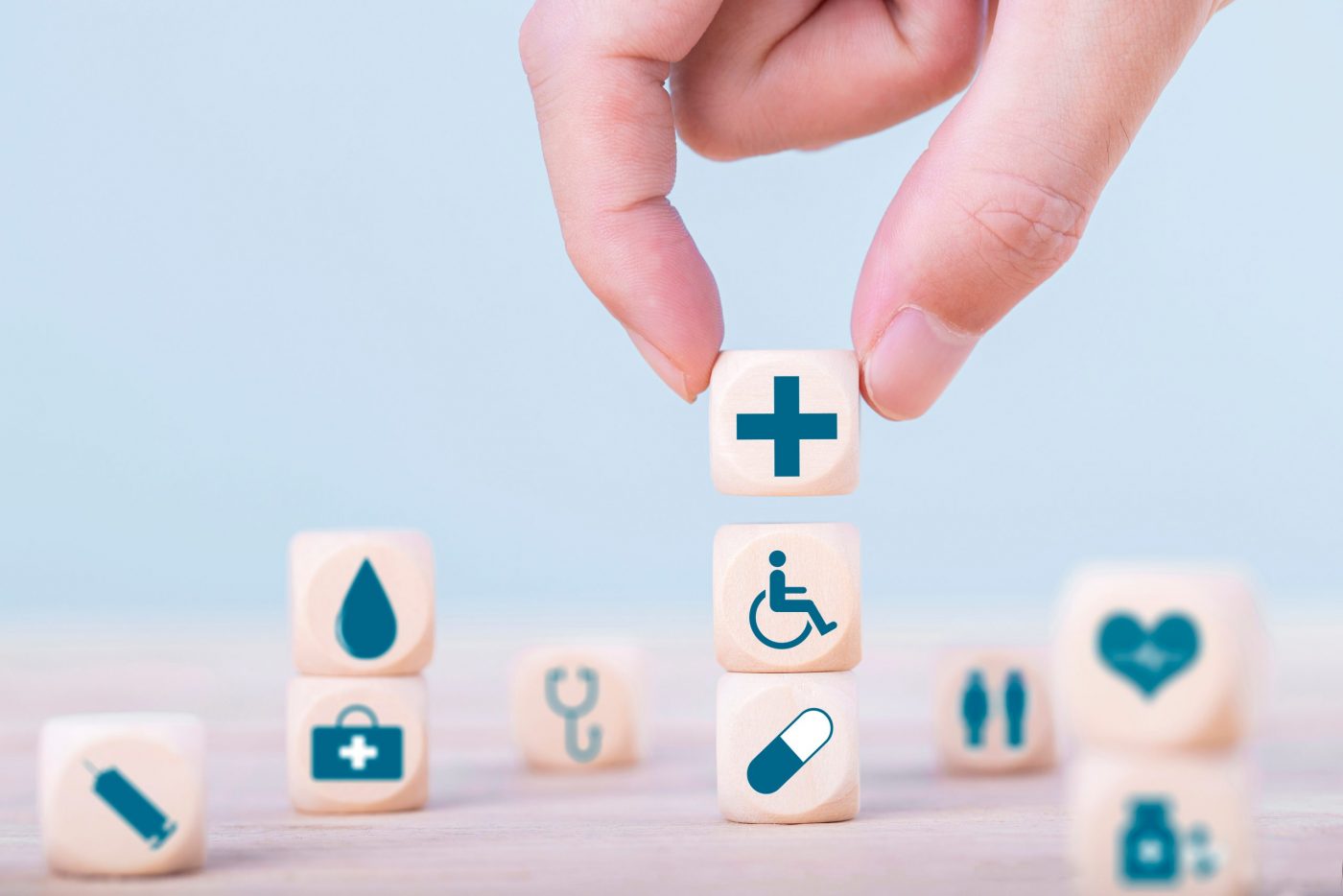So what are the implications of these new ways of communication for pharma and their medical teams? In this blog we discuss how pharmaceutical companies and their medical teams can leverage these new communication channels, and in particular social media as a tool to strengthen and enrich their engagement with stakeholders.
Social Media listening as a powerful tool for medical affairs organizations
A wide variety of healthcare stakeholders including doctors, patients, professional associations, PAGs, industry and policy makers are actively engaging in social media channels such as LinkedIn or Twitter. An important example of the power of this new communication channels was observed during the COVID-19 outbreak, when doctors proactively engaged in scientific discussions with peers from all around the globe to improve our understanding of the disease and exchange information at a tremendous speed and with a reach that would be hard to achieve with other channels.1
For medical teams, social media channels can provide valuable insights into what opinion leaders think, including their key concerns. Social media listening, or the use of social media channels to collect insights from stakeholders, is emerging as a powerful tool for medical teams to engage with a variety of stakeholders in digital channels and to increase our understanding of their unmet medical needs.
How can medical affairs teams best leverage social media listening?
We see 4 key ways in which medical teams can leverage the power of social media channels to deepen their understanding of stakeholders and engage through new channels. Digital and social media should not be seen as a replacement to the core traditional interactions that field medical has with their stakeholders, but should be rather seen as an opportunity to strengthen and enrich those interactions.

DOLs
Beyond offering a new communication avenue, social media has also fostered the emergency of new opinion leaders now commonly referred to as digital opinion leaders or DOLs, who are actively engaged in social media channels. In the retail space, we have seen influencers become the most powerful marketing tool besides the more traditional advertising channels. In healthcare, we see DOLs expanding their sphere of influence with COVID-19 playing a catalyst role. The emergency of DOLs represents a great opportunity for MAFs to expand not only the channels of communication, but also the target audience and the type of opinion leaders that can be engaged.
Insights collection
Several industries are leveraging the power of social media data to create a deep understanding of their customers. Social media offers two important advantages: access to a large amount of information and information that can be accessed on demand.
Impact measurement
Measuring the impact and reach of our traditional interactions with opinion leaders is challenging. Here social media listening offers the advantage of quantitative analytics. To measure the influence of traditional opinion leaders, we look at aspects such as such as H-index, participation in conferences, role in different associations, etc. Aspects that are not always easily quantifiable. Thanks to the power of data analytics, the sphere of influence of a digital opinion leader can be more easily quantified by looking at the number of people their social media activity reaches and their engagement rates.
True omnichannel engagement
Digital and social media should not be seen as a replacement to the core traditional interactions that field medical has with their stakeholders, but should be rather seen as an opportunity to strengthen and enrich those interactions. Digital channels are an important channel to “meet stakeholders wherever they are”.
Grasping the opportunity
In conclusion, we see social media listening as an opportunity for medical teams to expand the communication channels to further move into omnichannel engagements and expand the pool of stakeholders that they can engage with and collect insights from. There are some important implications for medical teams. One of them is the need for new capabilities both technically and operationally in the team to harness the power of data. Another one is compliance. Medical teams are well-positioned internally in the organization to engage on digital interactions with OLs as they already follow strict compliance rules.
The same compliance rules that apply for other engagement channels should be considered for social media. Besides engaging and interacting with digital opinion leaders, medical teams can partner with DOLs to help them develop interesting content and provide education to peers via digital channels. Finally, and most importantly, at the core to any good interaction – physical or digital- is the exchange of meaningful content. Medical teams should always keep a focus on quality rather than quantity to provide information that adds value to their stakeholders.
Ultimately, the impact of social media listening should expand in the organization beyond the Medical Affairs team. Social media listening provides important insights for brand teams to further strengthen the overall strategy of products or therapeutic areas and should be leveraged cross-functionally.
We are curious to hear your thoughts! Are you already harnessing the power of social media? Please reach out to Pim Kooreman to continue the conversation.



